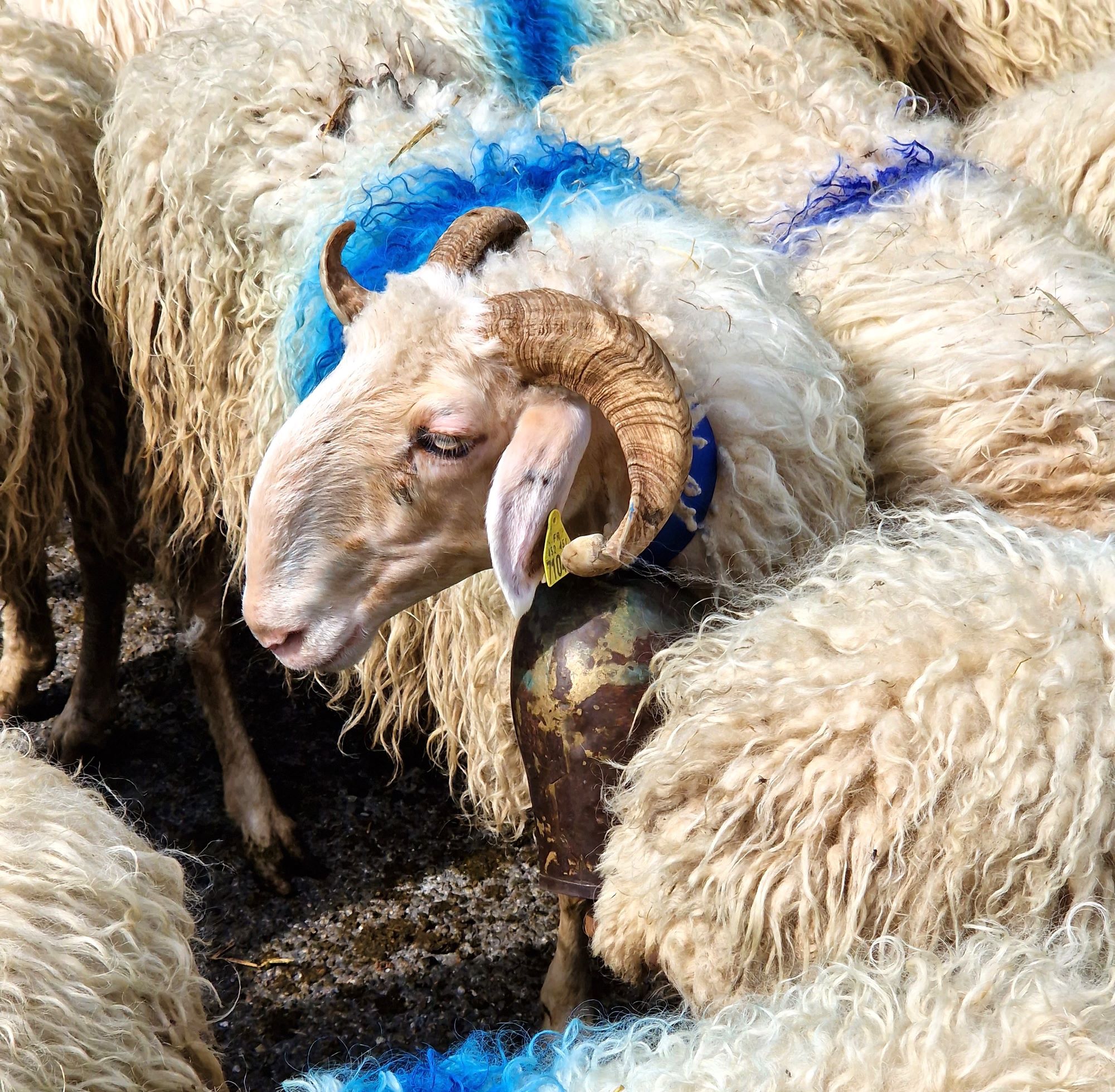
The transhumance is the practice of moving livestock to high mountain pastures as the weather warms in early summer. As I learned when I visited the Fromagerie Écologique Agour Irati, this ancient practice has economic and culinary roots. Moving the flock to communal mountain pastures in the summer allows the farmer to use his land to produce hay to feed the flock during the winter. And the untouched fields of mountain wildflowers, clovers and grasses are ideal for producing the most flavorful milk for cheese making. In the Valley of the Aspe, these mountain pastures are vertiginous patches of green perched on the sides of the rugged Pyrenean hills. There, watched over by the lonely “berger”or shepherd, along with his herding and guard dogs, the flocks pass the warm summer wandering higher and higher into the mountain passes as the summer warming causes new pastures to bloom.
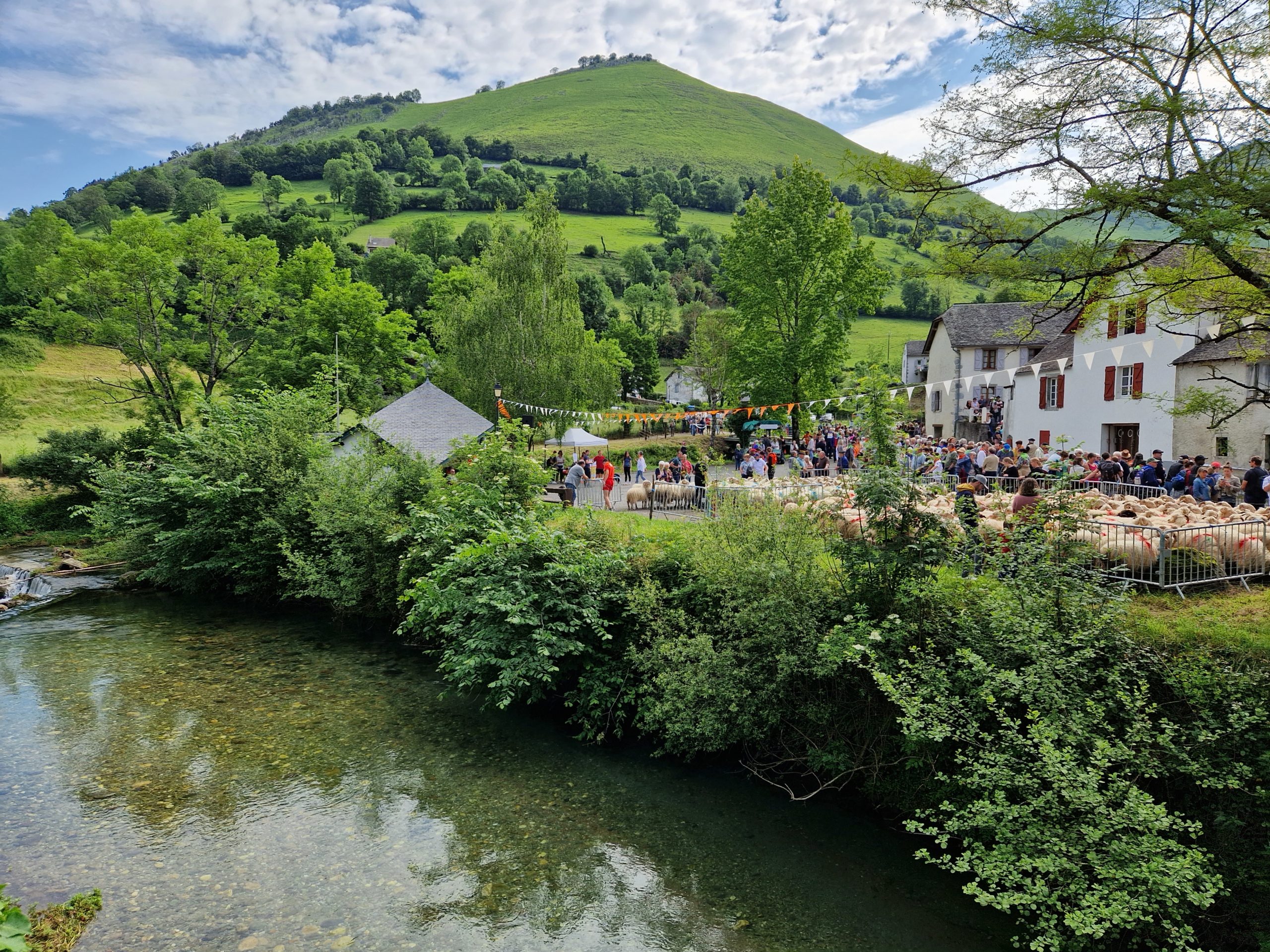
Each year, the beginning of the transhumance is celebrated with community fetes throughout the mountain regions of France. We attended the fête in Loudios-Ichere, population 155 souls and a great number of sheep, cows and horses. The day started with the gathering, marking and belling of the flocks. Each shepherd marks his animals with a distinctive colored dye and mark shape. After that, the local priest gave a benediction for the safety of shepherds and flock, then the mayor offered an aperitif for all the people come to witness the evant. Then, urged on by shepherd and herding dogs, and followed by spectators, the flocks begins to movebtoward the hills.
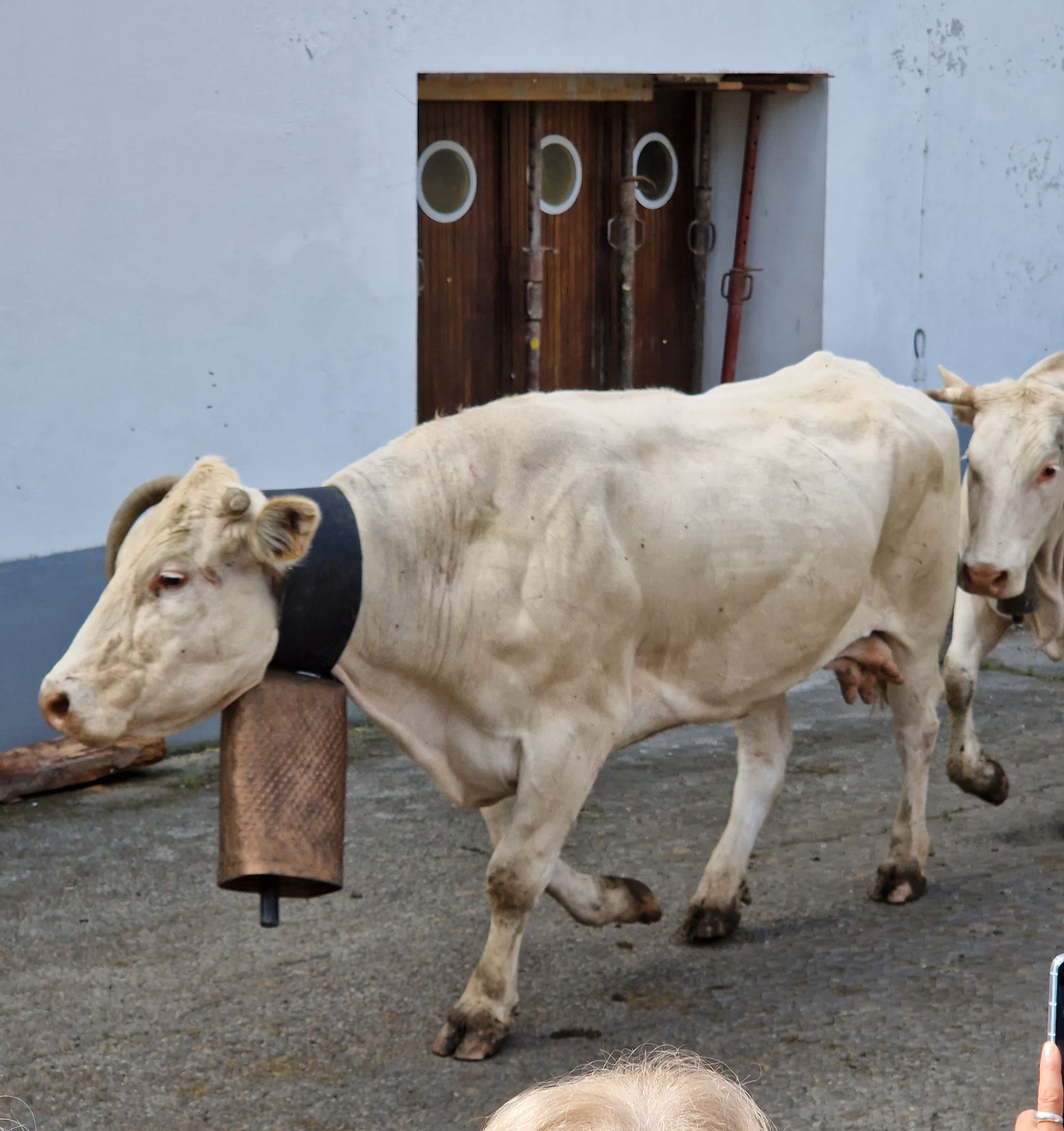
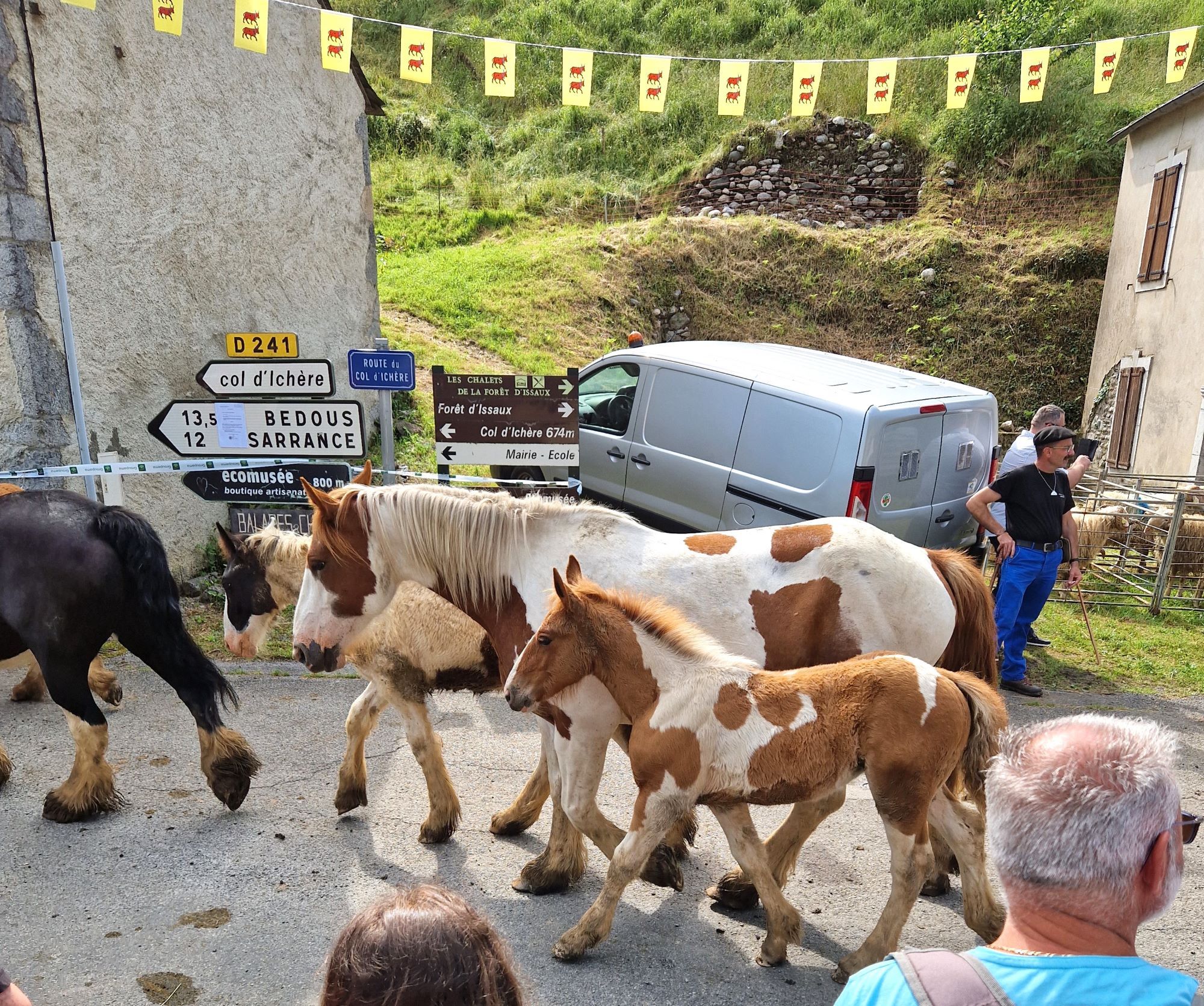
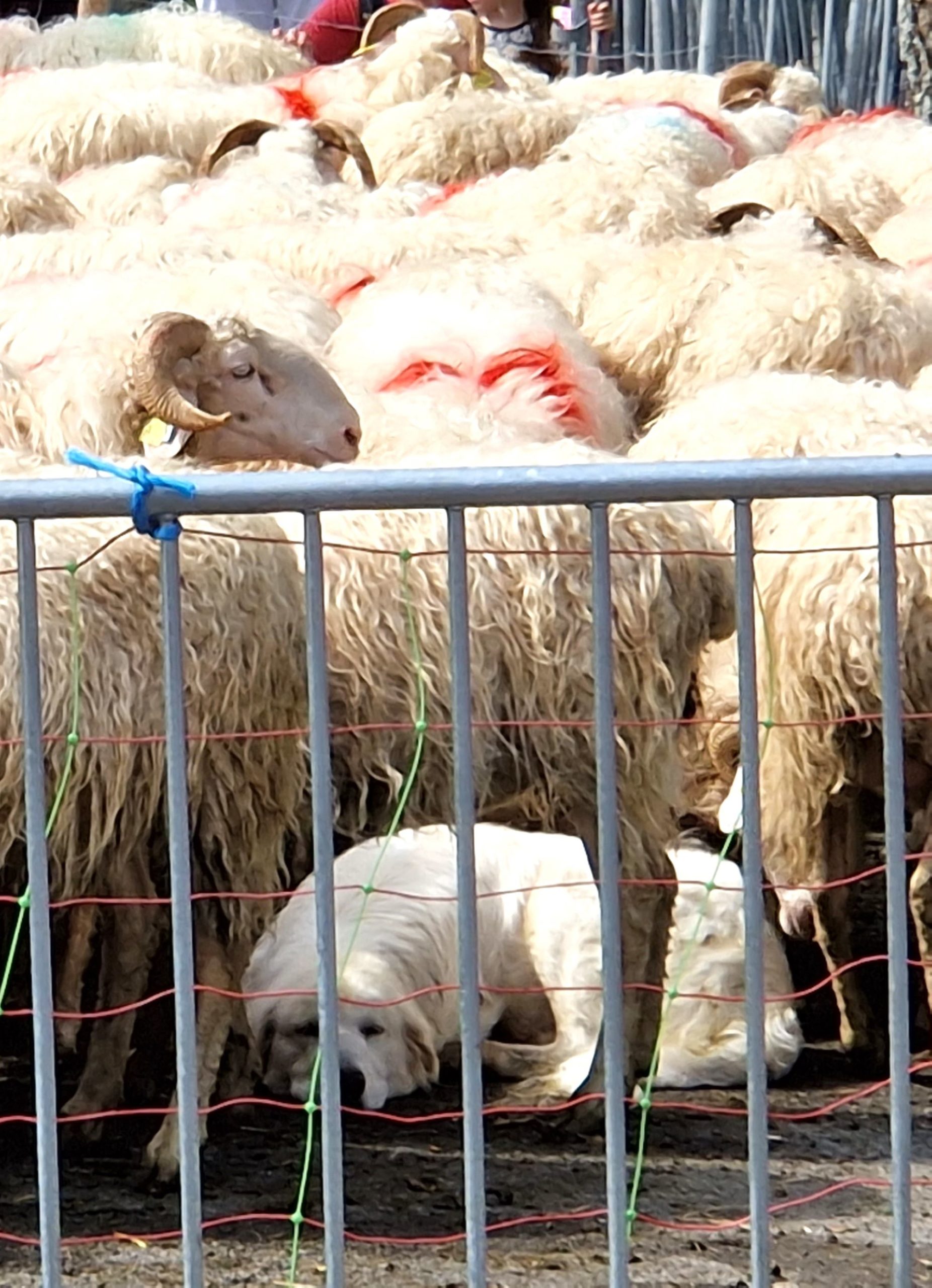
The days events continued long after the flocks had departed, with a communal lunch in the square in front of the Mairie, or town hall, and a market of local producers near the church. It was really a wonderful look into a practice as old as domesticated animals and a unique way of life in the isolated farms of the Pyrenees.